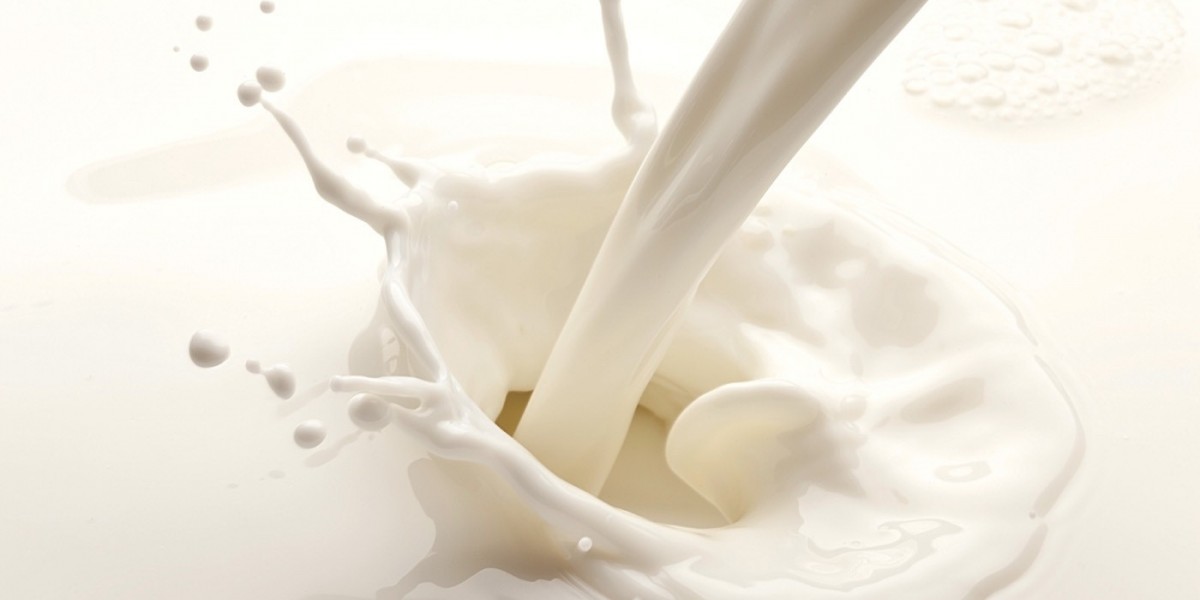Milk is a staple in most households, but not all milk is created equal. With so many choices on the market today, understanding the difference between products like best Dairy Omung and regular milk is essential for making informed dietary decisions. Whether you’re pouring it over your cereal, mixing it into tea, or baking with it, the kind of milk you use matters. This blog breaks down what sets it apart from regular milk, covering everything from processing and taste to nutrition and usage. Let’s uncover how this modern milk alternative fits into your lifestyle and whether it's right for you.
What Is Dairy Omung?
It is a dairy-based beverage produced using recombined milk solids and water, often enriched with nutrients such as calcium and vitamins. It’s not classified as “regular milk” because it doesn’t meet the fat and solids-not-fat (SNF) content required to be sold as traditional milk. Instead, it falls under the category of dairy drinks or dairy-based beverages.
This product is specifically developed for affordability and accessibility, especially in areas where traditional milk may not be available or economically feasible for every household. Despite not being “milk” in the regulatory sense, it offers a practical solution for everyday use.
What Is Regular Milk?
Regular milk refers to fresh, pasteurized cow’s milk. It contains natural levels of fat, protein, and calcium and undergoes minimal processing to ensure safety and shelf life. It can come in various fat percentages—whole milk, low-fat milk, or skimmed milk—but it still retains its classification as milk.
Regular milk is rich in essential nutrients and is often considered the gold standard for dairy consumption due to its natural composition and digestibility. It’s widely used in cooking, baking, and as a standalone beverage.
Key Differences Between Dairy Omung and Regular Milk
1. Composition
Dairy Omung is made from milk solids and water, sometimes fortified.
Regular milk is natural, with no recombination.
While both serve similar purposes in daily routines, the processing behind Dairy Omung makes it different in texture and nutritional density.
2. Nutritional Value
Dairy Omung may have added vitamins and minerals, but it usually has a lower fat content than regular milk. On the other hand, regular milk offers naturally occurring nutrients, including a balance of fat, protein, and lactose.
That said, the nutritional profile of Dairy Omung is tailored to meet essential requirements affordably, making it a suitable choice for families on a budget.
3. Taste and Texture
Regular milk has a creamier, fuller mouthfeel. Dairy Omung, though lighter, still provides a pleasant taste when used in tea, coffee, and recipes. Some consumers may notice a slightly different aftertaste due to the reconstitution process, but it blends well in everyday use.
4. Shelf Life
Dairy Omung often has a longer shelf life because of Ultra-High Temperature (UHT) processing and packaging. Regular milk has a shorter shelf life and requires refrigeration.
This makes Dairy Omung an excellent choice for places with limited refrigeration or for stocking up without the worry of spoilage.
5. Price and Accessibility
One of the major reasons people opt for Dairy Omung is its cost-effectiveness. It’s significantly more affordable than fresh milk, making it accessible to a wider demographic.
For consumers in rural or low-income urban areas, Dairy Omung bridges the nutritional gap at a lower price.
When Should You Choose Dairy Omung?
Budget-Friendly Needs
If you’re looking for a cost-effective alternative for everyday tea, coffee, or light cooking, Dairy Omung offers excellent value.Longer Storage Requirements
Because of its extended shelf life, it’s perfect for stocking in bulk or for households without reliable refrigeration.Tea & Coffee Use
It blends seamlessly into tea and coffee without overpowering the flavor, making it a practical choice for daily hot beverages.Large Households
In homes with high milk consumption, Dairy Omung can stretch your budget while still meeting your dairy needs.
When Should You Choose Regular Milk?
For Children and the Elderly
Natural milk provides full-fat nutrition and is ideal for age groups that need more protein, calcium, and fat for growth and bone health.For Baking and Cooking
If richness and creaminess are essential to a recipe, regular milk may deliver better results, especially in desserts, sauces, and puddings.For Raw Consumption
If you enjoy drinking a glass of milk on its own, the taste and texture of fresh milk can be more satisfying.
Can Dairy Omung Replace Regular Milk in Recipes?
For most basic recipes—such as custards, curries, or pancakes—Dairy Omung can be a functional substitute. However, in recipes that rely heavily on fat content or where milk is a key flavor contributor, you may notice some differences.
The good news? You can adjust quantities slightly or mix Dairy Omung with a bit of cream for added richness in baking.
Is Dairy Omung Healthy?
Yes, Dairy Omung is safe and generally nutritious for most people. It is often fortified with calcium and vitamin A or D, ensuring it meets some of your daily dietary needs. While it may not offer the same complete profile as regular milk, it’s still a beneficial option, especially when traditional milk isn’t available or affordable.
For those who are lactose intolerant or seeking plant-based options, however, other milk alternatives like almond or soy milk might be more suitable.
Consumer Perception and Usage Trends
Across Pakistan and many other developing countries, Dairy Omung has found a niche. It’s praised for its affordability, ease of use, and shelf stability. Urban families may keep it as a backup, while rural households often rely on it as a primary dairy source.
Brands like Olpers Mart have played a crucial role in promoting and maintaining quality standards in the dairy beverage segment, ensuring that consumers receive both value and nutrition.
Conclusion
Choosing between Dairy Omung and regular milk depends on your personal needs, budget, and how you use milk in your daily routine. While regular milk remains the go-to for many, Dairy Omung provides a worthy, cost-effective alternative without compromising on basic nutrition. Its longer shelf life, accessibility, and affordability make it ideal for millions of families. Whether you're using it in your morning tea or adding it to recipes, it gets the job done. For those seeking convenience and value, Dairy Omung delivers a dependable solution. It's not about better or worse—it’s about what fits your lifestyle best.
Looking for reliable, high-quality dairy options? Explore Dairy Omung and other dairy solutions from Olpers Mart—where affordability meets taste and safety. Wondering, what Dairy Omung is? It’s an economical, nutrient-enriched dairy drink, perfect for daily use and trusted by families nationwide.
Economical
Nutrient-Enriched
Perfect for Daily Use
Trust Olpers Mart to keep your family nourished with quality products that work for every home and every budget.








